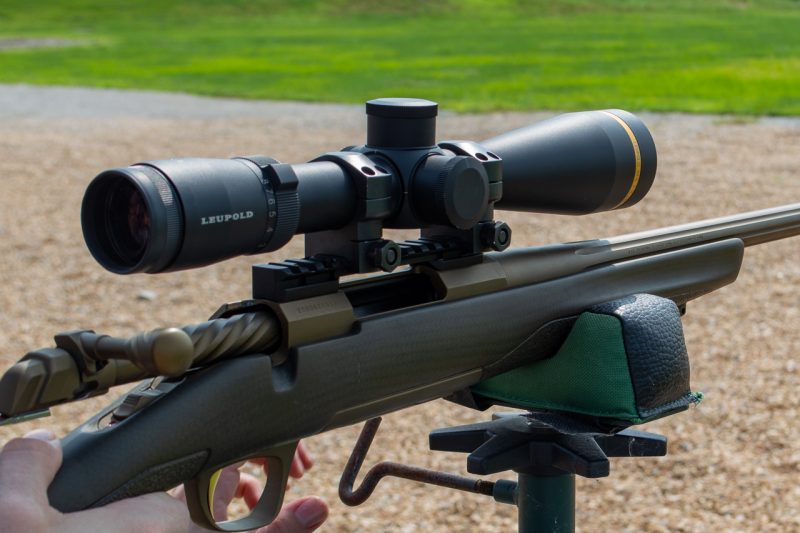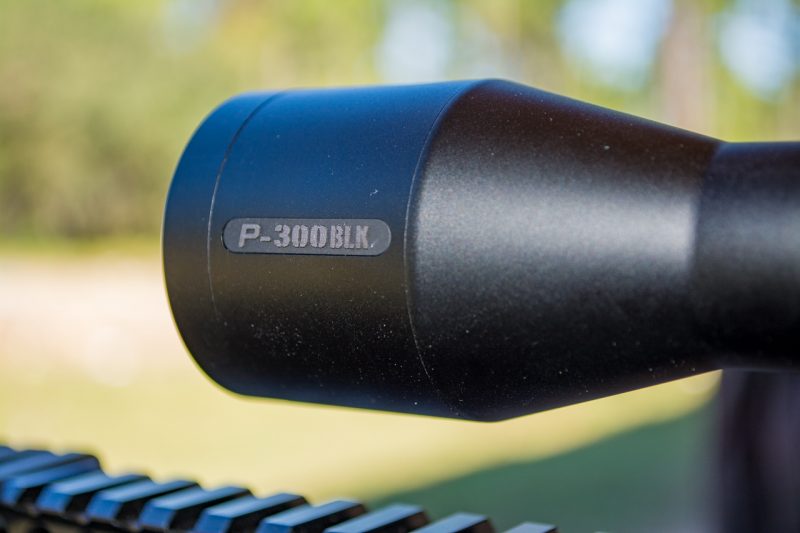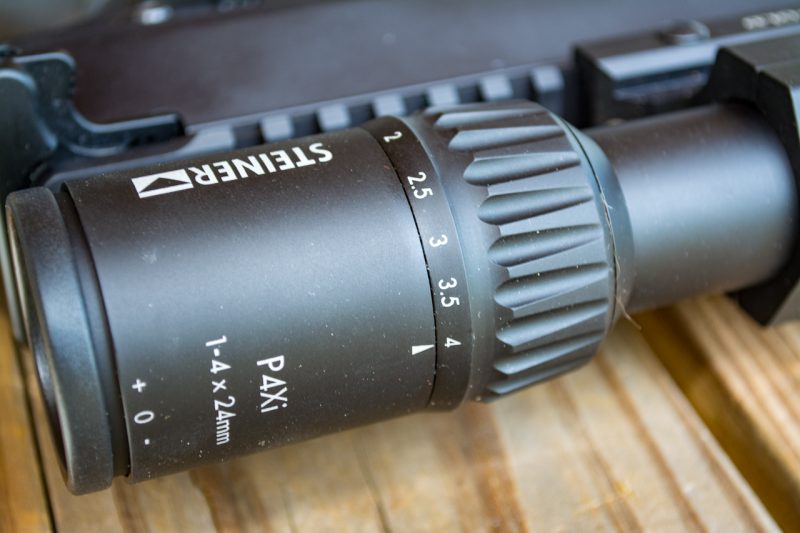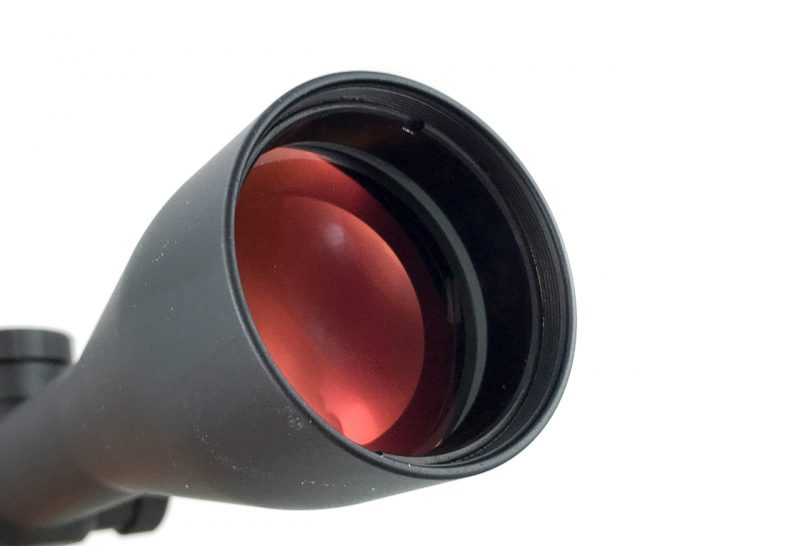What You Need to Know When Buying a Scope
Tom McHale 06.25.19

Whether for hunting, competition, tactical, or plinking, there are some basic scope attributes common across virtually any magnified optic. Knowing some seemingly complex principles of scope design can not only save you a lot of money and headache but improve your shooting performance. Here’s what you need to know when buying a scope.
First, let’s talk about some basic scope design concepts. They can seem confusing on the spec sheets, but once you understand what they are, all of that marketing-speak will make a whole lot more sense.
Exit Pupil
The concept of exit pupil is fundamental to many other attributes of a scope, so we will start here. Once you understand what exit pupil is, and why it matters, the other specifications like objective lens size and magnification will make a whole lot more sense.
As the “pupil” part of exit pupil implies, this one is all about the human eyeball. Stand in front of a mirror and gaze into your own eyes. See that dark circle in the middle? That represents your pupil. Simply put, it’s the hole where light leaks into the middle of your eyeball. You might have noticed that it changes size depending on what’s going on around you. If it’s bright outside, that hole will decrease in size, so you don’t burn your retinas out. If it’s dark, the pupil will open to let in as much light as possible, so you don’t stub your toe on the way to a midnight snack run. So, the pupil changes size now and then, but there are still finite sizes to the diameter of the hole. That means that there are upper and lower limits to how much light can come in.

If you envision the incoming light as a cylinder, like a soup can, you can imagine how too big a can won’t fit through a smaller pupil hole. OK, so we’re bastardizing optical science to make a point, but it kinda works. If we transition to scopes, envision a “soup-can-like” cylinder of light coming out the back and into your eyeball. If a scope creates a cylinder too small, then your eye is left wanting more light – you could have eaten one of those jumbo #10 cans instead of the mini. You’ll still see something, but a larger light beam would allow you to see more. If too large of a light cylinder is exiting the scope, then only part of that will fit through the pupil and your eye will not receive the benefit of all that extra light. Make sense? If you want to see this in action, hold one of your rifle scopes about 10 inches in front of your eye and you’ll see that small circle of light in the center of the lens.
Now to the numbers. The average human eye deals with a beam of light in the 2mm to 7mm range depending on whether you’re in bright light or darker conditions. Your pupil size will be closer to 2mm in bright light and 7mm when there’s not much light. Now, think about the importance of matching the scope to your eye under different conditions. If you’re shooting at dusk, your pupil will be opened all the way up. If your scope is delivering a 2.5mm beam of light to your 7mm pupil, you’ll see a darker and less clear image because your eye can handle, and wants to see, more. In the same conditions, if your scope sends a 7mm beam your way, you’ll see a much brighter and clearer picture. The opposite scenario holds true as well. In broad daylight, when your pupil is shrunk down to two or three millimeters, a scope that spits out the same size will work just fine. A scope that spits out a larger beam of light will be fine too – you just won’t be able to process all available light. In fact, in that scenario, your scope might be more forgiving to eye placement. Since there’s a larger beam of light than your pupil size, you’ll be able to move your eye a bit relative to the scope and still see a bright picture. That might be handy for shots where you have to quickly acquire and aim.
Here’s the bottom line. Exit pupil matters. It’s not just an obscure specification used by marketing people to sell you a more expensive scope. Depending on what you’re doing, and how you shoot, a larger or smaller one can be just fine. The important thing is to know what it is and what the impacts are on what you see through your scope. The other important thing to know is that exit pupil changes on variable magnification scopes. Next, we’ll talk about that and how the size of the objective (front) lens makes a difference.
Objective Lens Size and Magnification
Scope marketing people to make a big deal about the size of their objective lens, but it’s not all meaningless hype. In fact, variable magnification and objective lens size work together to determine the size of the exit pupil, or beam of light coming into your eyeball.

Without getting into the course content for a PhD in Optical-Scopery, know that you can calculate the exit pupil size for any scope in seconds. Just divide the objective lens size in millimeters by the level of magnification. For example, if I’m using a 10x fixed-power scope that has a 50mm objective lens, it as an exit pupil (beam of light coming out the back) of 5mm. That’s pretty forgiving across a variety of conditions. If I’m using a variable-power scope with high magnification levels, that exit pupil size can change rapidly. Suppose we’re using a 5-20×50 scope at full magnification. When you divide the 50mm objective lens size by a 20x magnification setting, the exit pupil shrinks down to just 2.5mm. On a bright and sunny day, that may be just fine as your eye’s pupil will also have reduced its diameter to that level. However, if you’re shooting in morning or dusk conditions where there’s not a lot of light, you won’t be seeing as bright a picture through the scope as you’re seeing with your naked eye. If you adjust the magnification of that same scope all the way down to 5x, then the exit pupil will be a whopping 10mm and you’ll see more clearly in darker conditions.

So, the bottom line is this. A big objective lens can be a good thing and it can also be meaningless. It all depends on magnification level and your anticipated shooting environment.
Coated Lenses
Since we’re talking about light, we ought to mention coated lenses. Nearly all scopes have them now, but quality varies. Here’s why coating is both counterintuitive and important.
While different types of coatings may be used on interior lenses of scopes and binoculars for different reasons, the feature description on the box generally refers to non-reflective coatings. The purpose of such coatings is to increase the amount of light transmission through the lens. On the surface, this may sound counterintuitive. After all, glass is clear (for the most part) so wouldn’t applying some coating that makes it “less clear” reduce the amount of light that can pass through? If you hold a piece of cheesecloth in front of your face, you’re not going to see as well, right?

Fortunately, anti-reflective coatings are much more effective than cheesecloth and they do, in fact, increase usable light transmission. Here’s how. When light strikes a pure glass lens, a certain amount, maybe five percent, is reflected (bounces off the surface) rather than passed through. So, if you blast 100 units of light through a non-coated scope lens, maybe 95 will make it through to your eyeball. The coating reduces the reflective properties of the glass so fewer light rays bounce off in undesirable directions. The net result is that a higher percentage of available light makes it through the lens.
While hard to isolate the causes in the store, the quality of lens coatings is one of the reasons that two scopes with identical tube sizes, objective lens sizes, and magnification levels can have dramatic differences of image quality. Quality of the glass and its coating material and procedure is one reason that you get what you pay for with a more expensive scope.
The Bottom Line
There are lots of other features to consider when buying a scope like reticle type, turret adjustment consistency, and first vs. second focal plane design, but we’ll cover those in a future article. For now, realize the importance of exit pupil and the factors that impact it (objective lens size and magnification) and use that information to choose the right scope attributes for the type of shooting you intend to do.

